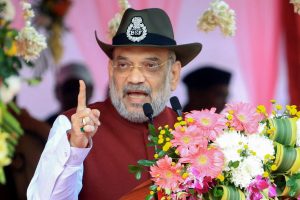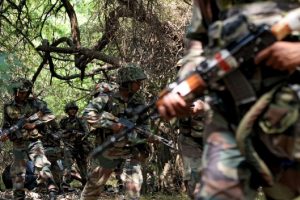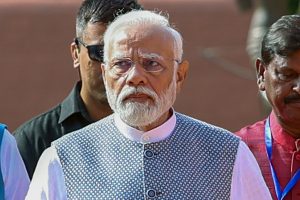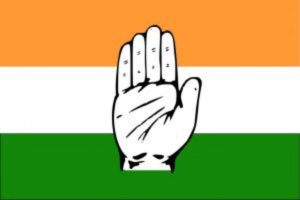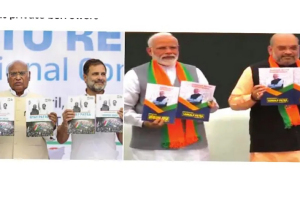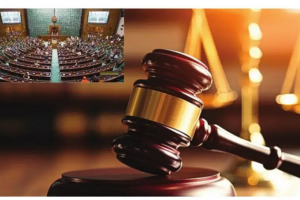Settling down in Delhi 58 years ago wasn’t a very good experience for one in the beginning. Agra’s kharbuzas were sweeter and so were the phalsa fruit, which one could munch on the hot afternoons with salt masala. Slowly the perception of the city changed. While doing night duty there was plenty of time for a bachelor to spend the day cycling from Ludlow Castle Road and exploring the city. The Red Fort naturally came first on the list of monuments. Entering it through the Lahore Gate and proceeding to the Naqqar Khana, one sought a meeting with the Custodian of the fort, Asghar Ali Khan. He had a fund of stories to relate after the initial hesitation of meeting a stranger. “Lal Qila,” he said, “has many secrets hidden from the casual visitor.
There are palaces which brood in the day and come alive at night with paranormal activity. I have seen kings, princes and princesses on my midnight rounds, especially on Thursdays. After that a photographer of a Delhi newspaper, Kishor Parekh spent a whole night at the fort in the 1960s, photographing paranormal activity. However, his photos showed only blobs of light or skeletons dancing around. They were published alright and caused a lot of excitement. But the Army, which occupied a large part of the fort, came out in denial that no such activity took place in the Dewan-e-Am or Dewan-e-Khasand Rang Mahal. The photographer, however, stood by his exclusive pictures as proof. Outside the fort one day one entered the shrine of Bhure Mian and found a queue of burqa-clad women.
They had come for cures effected by the caretaker, Pir Yasin Beg, who distributed amulets (taviz) and medicines for all sorts of ailments, “particularly for those possessed by djinns”. Pir Yasin emphatically declared that every Jumairat (Thursday) a procession led by Bahadur Shah Zafar went around the fort after midnight. Naaz Hotel, behind the Jama Masjid, whose earlier occupant had been the painter M F Husain, was a good residence.
From this room one could get a bird’s-eye view of the whole area right up to the Red Fort and no wonder provided a lot of inspiration for Husain’s paintings. Near Naaz was Azad Hind Hotel, whose proprietor was an Urdu poet with seven wives and 28 children. Afzal Sahib had declared himself an atheist, saying since he had become one he had prospered, having found God in women “(Maine tau aurat ko khuda mana hai)” At Azad Hind all sorts of characters found accommodation, from classical artiste Ustad Latafat Husain Khan of the Agra Gharana to Firoze Kanchwala, the glass-eyed singer, to dancers Shanta Rani and vivacious Naseem Bano, who had entertained President Najibullah in Kabul, to Khan Abdul Haye Khan, an expert angler, and Tyagiji, Hindi translator in foreign embassies.
From there Haji Hotel, in front of the southern gate of the Jama Masjid, was a good meeting point, where Haji Zahooruddin sat amidst a group of old men. There was one with the features of Aurangzeb, another an exwrestler, Ustad Zahooro, chainsmoker Mohd Mian Akbar and the gentle Master Sahib. They talked of the “Mutiny” as though it was a yesterday event, No wonder too, as their grandfathers had played a part during the revolt. Hajiji related the story of how his maternal grandfather, MaulviRajab Ali, and father, Munshi Turab Ali had caught the thieves, who stole the shoes of namazis during Friday prayers. Two or three men used a fishing line to do so and the Maulvi and the Munshi had to abstain from namaz that Friday to catch the “juta-chors”.
Tales over, Haji’s servant Nazir would bring a big tiffin-carrier from his house in Kutcha Mir Ashiq and everybody joined in the meal before dispersing. You could taste the best shammikababsat this gathering before walking down to Karim Paanwallah’s shop, which had an engraved verse decorating its facade: “Paan kehta hai sookh kar mar jaoonga mein/Ai Labh-eyaar gar moonh na lagaya tu ne” (The paan says I will dry up and die if lips my friend you do not taste me). After a paan here people usually strolled to Paratha Gali, where a milkman’s shop sold the best milk. His grandfather had fought in 1857 and the old man’s lathi was preserved in the shop. One Sunday evening some friends from the media got together to attend a “mujra” at GB Road. Among them was Peter Hazlehurst, Times London India representative. The dancing girls did take advantage of the novices, with babyfaced Shankar drawing a lot of attention.
Even so they and some pimps saved one in the group from being roughed up by a group of drunk truck drivers, who had initially picked up a quarrel with him. The scribe got out of trouble because of the playwright Chacha Niaz Haider, who had accompanied him. Chacha winked at a pimp whom he knew and soon calm was restored. The visitors then walked out with a sigh of relief, with the disappointed dancing girls calling out, “Aap kahan ja rahi hain?” (Where are you going?) and then shying away. The photo-feature on the mujra was published in “See Magazine” brought out by Hali Vats, life-companion of the National School of Drama’s icon Sheila Bhatia, and the Times man probably also wrote about it in his paper. Not too far from the Red Light area is Urdu Bazar, in which stayed people like Mir Mushtaq Ahmed, first Chief Executive Councillor of Delhi, M O Farooqi, CPI leader, and close by the redoutable Imdad Sabri and Chowdury Abdul Sattar.
Kashmere Gate had its patriach Pandit Ramchander (born 1860) and Chandni Chowk Lala Hanwant Sahai, an accused in the 1912 Hardinge Bomb Conspiracy Case. That was at the fag-end of the 1960s when the only Indian marchioness, Bapsybano Parvey, was on her way to meet the Shah of Iran and plead with him for the restoration of the fire temples of the Parsis. A friend, who interviewed her, too lived in Azad Hind and one of his sons was even born there. His wife and he would take the kids to Karim’s for breakfast, lunch and dinner and make monthly payment. Once there was a strike in the newspaper he worked for and old Karim Mian waived payment till it was called off. The qawwalis at Hazrat Kalimullah’s shrine had their own charm, with women going into ecstasy (Haal), along with eunuchs dressed in kurta-pyjama with hair open, the famous Sona and Chandi among, them. Also present used to be Barrister Nuruddin Ahmed, thrice Mayor of Delhi, and his pretty daughter Ameena. Some evenings of the gourmet were also spent at Haveli Sadr Sadur, which had a nahari joint, called Mughal-e-Azam outside it. At this haveli Ghalib used to recite at mushairas, made famous in the latter-day fictional one, “Dilli ki akhri shama” (the last lamp of Delhi) by Mirza Farhatullah Beg. The pedestal on which the shama was kept was still there in the courtyard.
A little way ahead in Suiwalan was the shop of butcher Qureshi Dada. About 100 years old, he was born during the “Mutiny” and enjoyed coyly winking at the mohalla sweeper-women, who often instigated him to do so, with nary a hint of sexual harassment. What naïve times those were compared to present ones, when tempers flare up at the slightest perceived offence, resulting in stabbings and shootings at public places! No wonder one longs for the varied nuances of the Delhi of more tolerant days.


